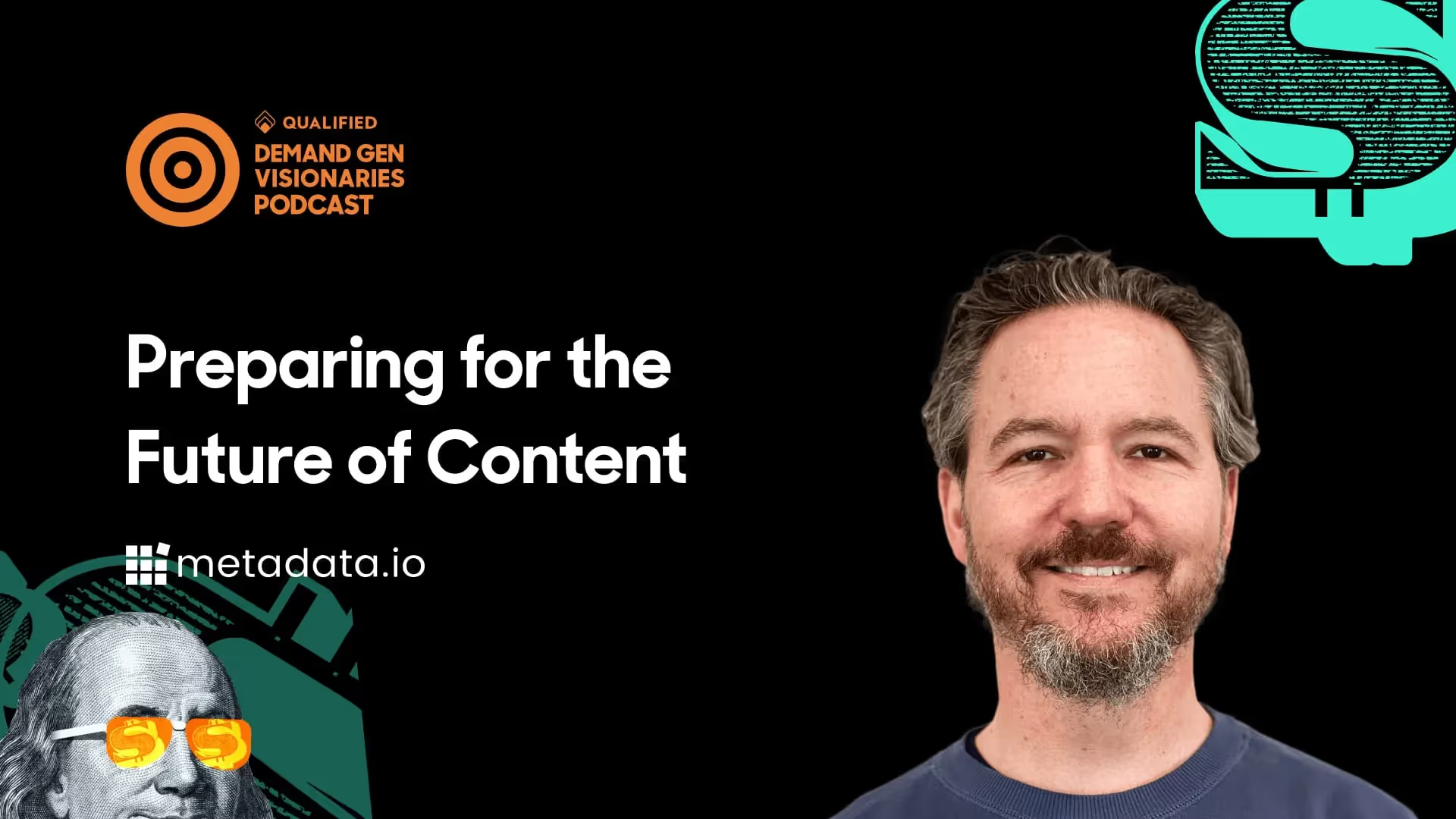Preparing for the Future of Content
On this episode Jason shares his insights on preparing for the future of content, the benefits of long-term thinking in marketing, and having intention behind the content you create.




On this episode Jason shares his insights on preparing for the future of content, the benefits of long-term thinking in marketing, and having intention behind the content you create.

This episode features an interview with Jason Widup, VP of Marketing at Metadata.io. Metadata.io provides a closed-loop account-based marketing solution that amplifies marketing campaigns with opt-in leads. Jason is an experienced and talented Marketing Operations and Technology leader with a focus on developing high-performing teams through empowerment, challenging experiences, and trust.
On this episode Jason shares his insights on preparing for the future of content, the benefits of long-term thinking in marketing, and having intention behind the content you create
Key Takeaways
Stay up to date with weekly drops of fresh B2B marketing and sales content.
On this episode Jason shares his insights on preparing for the future of content, the benefits of long-term thinking in marketing, and having intention behind the content you create.


This episode features an interview with Jason Widup, VP of Marketing at Metadata.io. Metadata.io provides a closed-loop account-based marketing solution that amplifies marketing campaigns with opt-in leads. Jason is an experienced and talented Marketing Operations and Technology leader with a focus on developing high-performing teams through empowerment, challenging experiences, and trust.
On this episode Jason shares his insights on preparing for the future of content, the benefits of long-term thinking in marketing, and having intention behind the content you create
Key Takeaways
Stay up to date with weekly drops of fresh B2B marketing and sales content.
On this episode Jason shares his insights on preparing for the future of content, the benefits of long-term thinking in marketing, and having intention behind the content you create.


This episode features an interview with Jason Widup, VP of Marketing at Metadata.io. Metadata.io provides a closed-loop account-based marketing solution that amplifies marketing campaigns with opt-in leads. Jason is an experienced and talented Marketing Operations and Technology leader with a focus on developing high-performing teams through empowerment, challenging experiences, and trust.
On this episode Jason shares his insights on preparing for the future of content, the benefits of long-term thinking in marketing, and having intention behind the content you create
Key Takeaways
Stay up to date with weekly drops of fresh B2B marketing and sales content.
On this episode Jason shares his insights on preparing for the future of content, the benefits of long-term thinking in marketing, and having intention behind the content you create.



This episode features an interview with Jason Widup, VP of Marketing at Metadata.io. Metadata.io provides a closed-loop account-based marketing solution that amplifies marketing campaigns with opt-in leads. Jason is an experienced and talented Marketing Operations and Technology leader with a focus on developing high-performing teams through empowerment, challenging experiences, and trust.
On this episode Jason shares his insights on preparing for the future of content, the benefits of long-term thinking in marketing, and having intention behind the content you create
Key Takeaways
Discover how we can help you convert more prospects into pipeline–right from your website.